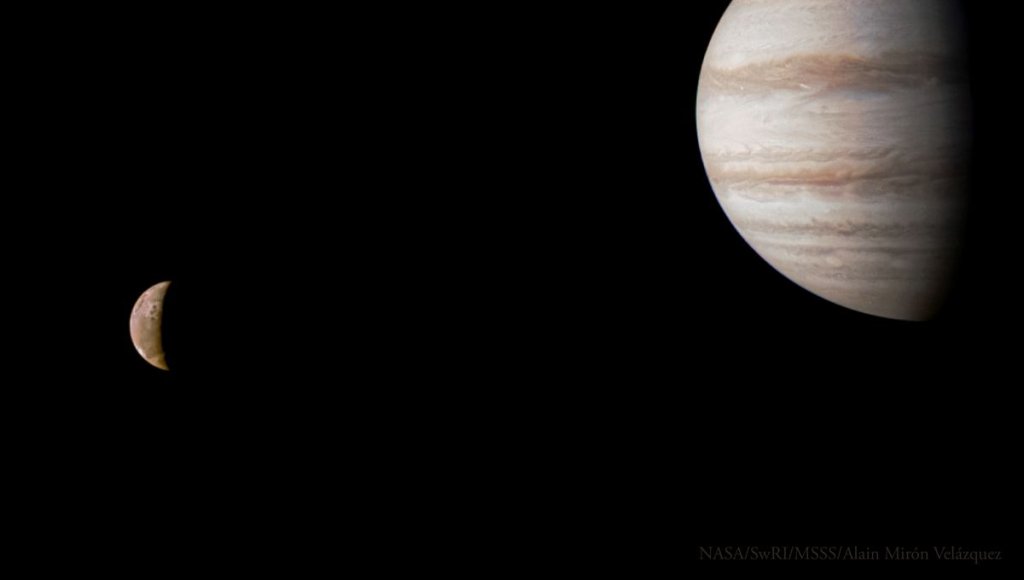
NASA’s Juno mission captures stunning view of Jupiter with its volcanic moon, Io (photo) (Image Credit: Space.com)
NASA’s Juno mission has captured a stunning new portrait of Jupiter with its volcanic moon, Io.
Juno snapped this new view on July 30 as it passed by Io ahead of its 53rd close flyby of Jupiter the following day. The photo captures Jupiter in the foreground with an up-close view of the gas giant’s colorful cloud bands and swirling spots. The sliver of Io captured in the background showcases the moon’s dark, molten-red surface.
Using raw data from the JunoCam instrument, citizen scientist Alain Mirón Velázquez created this dramatic view by enhancing the contrast, color and sharpness of the celestial bodies. The spacecraft was about 32,170 miles (about 51,770 kilometers) from Io, and about 245,000 miles (about 395,000 kilometers) above Jupiter’s cloud tops at the time the photo was taken, according to a statement from NASA.
Related: How long does it take to get to Jupiter?
Jupiter, the largest planet in our solar system, has a total of 92 moons. Io, Jupiter’s fifth moon, is only slightly larger than Earth’s moon and the fourth-largest moon in the solar system. It is Jupiter’s third-largest and the innermost Galilean satellite — which refers to the four Jupiter moons that were the first celestial objects to be discovered orbiting an object other than the sun by Galileo Galilei in 1610.
Io is the most volcanically active body in the solar system, home to hundreds of volcanoes that regularly erupt with molten lava and spew sulfurous gas plumes hundreds of miles upward into the atmosphere. Recent close flybys of Io have allowed scientists to study the volcanic moon and its tortured surface in even greater detail.
“Juno has provided scientists with the closest looks at Io since 2007, and the spacecraft will gather additional images and data from its suite of scientific instruments during even closer passes in late 2023 and early 2024,” NASA officials said in the statement.
The images collected by Juno are available online to the public. Access to the spacecraft’s raw data has allowed citizen scientists to help make thousands of important scientific discoveries since Juno reached Jupiter in 2016.





